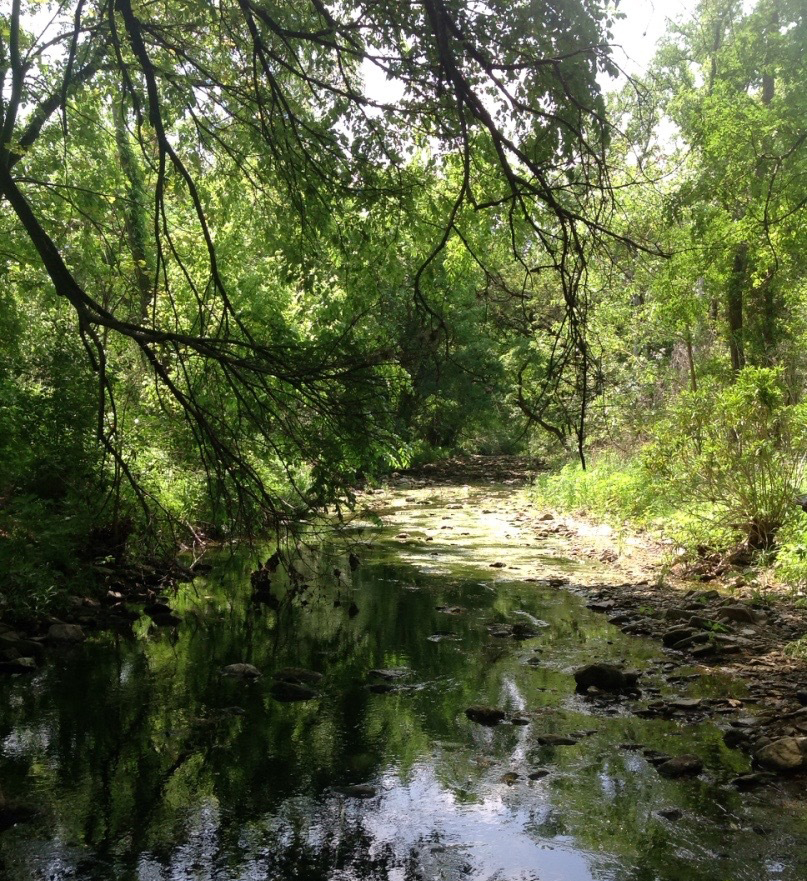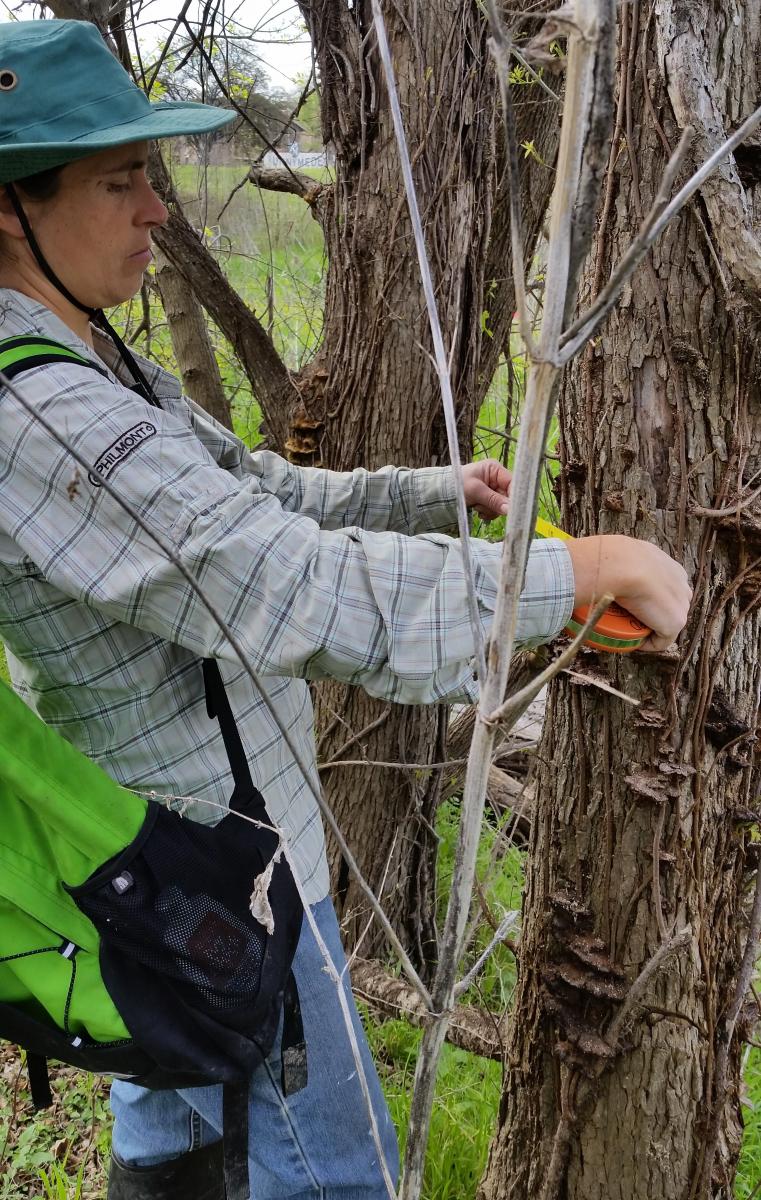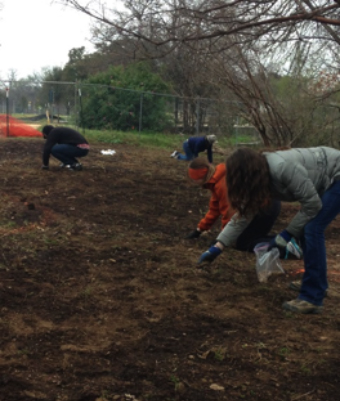Growing a forest helps mitigate climate change
Austin’s Grow Zones are beginning to transform into urban forests and aid in carbon sequestration.
Our Grow Zone program began in 2012 in about a dozen parks. The creeks were mowed all the way into the channel, like this photo of Bartholomew Park in 2012.
And then, it stopped! No more mowing on the creek’s edge! Massive growth has occurred in these three years in our Grow Zones. In this photo from the same location at Bartholomew Park, for example, you can barely see the top of the electrical posts!
This is good news because, in addition to improving water quality, holding the soil, and enhancing the habitat for aquatic critters and terrestrial wildlife, our growing forest is taking carbon dioxide from the atmosphere and converting it into plant biomass. That’s the magic of plants. In doing so, our growing creeksides are helping mitigate climate change.
We wanted to examine how much carbon could be stored in a mature, undisturbed riparian forest like the one in the photo below.
We also wanted to see how much carbon is stored in our healing Grow Zones. We visited twelve riparian areas that we call reference sites and represent the potential future of our Grow Zones: Tall trees in the canopy, shrubs and young trees in the understory, and sparse vegetation and lots of organic matter on the ground. In three plots at each site, we measured the diameter and height of every tree with a diameter of 1” or more and recorded the species. We did the same in twelve of our Grow Zones.
What did we find? Reference sites had, on average, twelve trees per plot and our Grow Zone plots had only three trees on average. When we calculated the amount of carbon stored in these plots, we found that reference sites stored more than 56.9 tons of carbon/ hectare. Our Grow Zones at this point only store about 18.2 tons of carbon/hectare.
Why are Grow Zones storing so little carbon at this point? Well, they are VERY young forests. They are only three years old and some started with nothing but mowed grass. Most of the seedlings that are growing after mowing stopped are too small to be counted. But, in a few years, they will reach that threshold diameter, 1”! We are also helping speed up the process by planting seedlings during the winter.
With this TLC, our growing riparian forests will be more diverse and continue to take carbon dioxide from the atmosphere. As these forests mature, they can store three more times carbon than they have now, just like the Reference Sites do!
Grow Zones also help mitigate climate change because no mowing is taking place. That is, NO carbon emissions from mowers inside our Grow Zones!
This is all great news because the number of new Grow Zones keeps growing. In 2012 we started with 19 Grow Zones and now the number is 47! Overall, we are protecting 184 acres along more than 67,000 ft. of stream channels.
One of our newest Grow Zones is along Lady Bird Lake, along Auditorium Shores. Thanks to the incredible energy of The Trail Foundation and the Colorado River Alliance, and the dedication of the volunteers they recruit, hundreds of native grasses and wildflowers were planted, seeds were spread, tree seedlings planted and lots of ragweed plants thinned! Early this year, the site was fenced, the soil was loosened up and the restoration began.

Less than one year later and hundreds of volunteer hours, this is how much our Grow Zone has changed!
Get Involved!
Sign up to find out about volunteer days
Join the Adopt-A-Creek and/or Adopt-a-Park programs.








